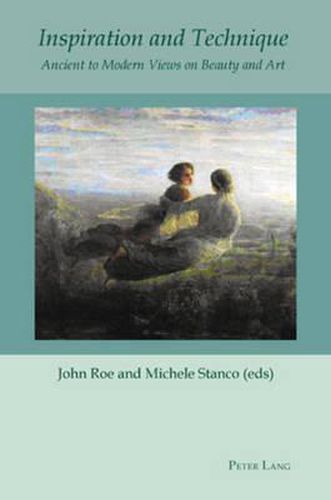Readings Newsletter
Become a Readings Member to make your shopping experience even easier.
Sign in or sign up for free!
You’re not far away from qualifying for FREE standard shipping within Australia
You’ve qualified for FREE standard shipping within Australia
The cart is loading…






While Plato extols inspired poetry (as opposed to poetry produced by means of technique), Aristotle conceives of poetry only in terms of techne. Underlying the opposition between inspiration and technique are two different approaches to ‘form’ inspiration is concerned with the impression of ideas or forms within the poet’s psyche (the author’s forma mentis), whereas technique deals with the transposition of the artist’s idea into the material form of the work (the forma operis). This dual view of form, and of its complex relation to matter, may be said to lie at the basis of a dual approach to aesthetic issues - a psychological and a textual one. Taking their cue from this opposition, the essays gathered here explore some of the most momentous phases in the history of aesthetics, from Graeco-Roman philosophy and oratory to Renaissance poetry and literary criticism, from neoclassical poetics to Romantic and Victorian views on inspired visions, to recent issues in neuroaesthetics, philosophy of art and literary linguistics. In so doing, they collectively point to the irremediable and continuing dualism of a critical tradition that has alternately emphasized the ideal elements of beauty and the material constituents of art.
$9.00 standard shipping within Australia
FREE standard shipping within Australia for orders over $100.00
Express & International shipping calculated at checkout
While Plato extols inspired poetry (as opposed to poetry produced by means of technique), Aristotle conceives of poetry only in terms of techne. Underlying the opposition between inspiration and technique are two different approaches to ‘form’ inspiration is concerned with the impression of ideas or forms within the poet’s psyche (the author’s forma mentis), whereas technique deals with the transposition of the artist’s idea into the material form of the work (the forma operis). This dual view of form, and of its complex relation to matter, may be said to lie at the basis of a dual approach to aesthetic issues - a psychological and a textual one. Taking their cue from this opposition, the essays gathered here explore some of the most momentous phases in the history of aesthetics, from Graeco-Roman philosophy and oratory to Renaissance poetry and literary criticism, from neoclassical poetics to Romantic and Victorian views on inspired visions, to recent issues in neuroaesthetics, philosophy of art and literary linguistics. In so doing, they collectively point to the irremediable and continuing dualism of a critical tradition that has alternately emphasized the ideal elements of beauty and the material constituents of art.